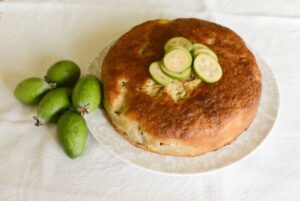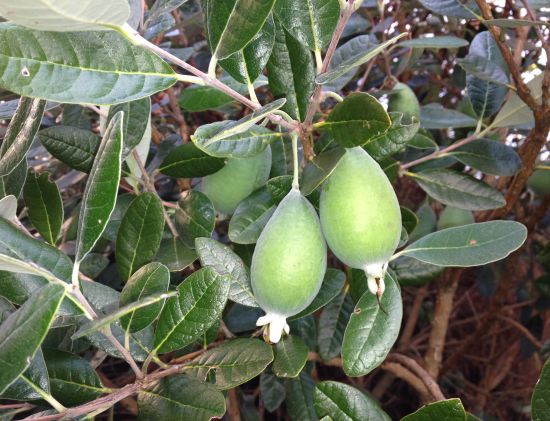
The feijoa is an attractive tree that can be grown in hedges or as specimen trees.
Feijoas will tolerate most soil conditions from heavy clay through to light sandy soils, but the ideal is a fertile, heavy, free-draining soil. Feijoas prefer soils with a pH of 6.0-6.5. They have roots close to the surface and thrive if compost is added to keep the roots from drying out in summer. Being subtropical, they needs lots of feeding. After planting, apply rockdust with seaweed to get trees off to a good start. You may need to stake the plant in the beginning.

Apart from ‘Unique’ which is reliably self fertile, all feijoa varieties are only at best partly self fertile. Cross pollination between two (or more) different varieties will ensure good fruit set and fruit quality. This is because good pollination produces many tiny seeds, which leads to larger and better shaped fruit and a greater proportion of pulp. Due to the long flowering season, any combination of varieties seems to provide sufficient cross pollination. Good reliable varieties are Triumph, Mammoth, Kumeu and Apollo. Modern cultivars like Pounamu, Kakapo and Wiki Tu are also good varieties, and somewhat sweeter in taste.
As flowering occurs at the base of new season’s growth it’s therefore important to prune early in spring to ensure growth. Pruning is also required to maintain the desired shape.
Blackbirds in the South Island and a combination of blackbirds and mynas in the North Island are the main pollinators. As these birds feast on the flower petals, they collect pollen on their heads and carry it from tree to tree. Trees should be pruned to allow the birds to freely fly around and through the bush, therefore an open centre shape is recommended. Remove weak and damaged branches back to the main branch and thin the tree, if required, by removing internal branches back to the main trunk.
Feijoas are fairly free of pests and diseases. Leaf rollers, scale and thrips can attack feijoas. Sooty mould is a secondary attack after sap sucking insects have attacked the plant. Neem oil and a winter oil spray can be used if needed.
The fruit when ripe or near ripe falls from the tree and is best collected from the ground rather than picked. The down side is the fruit, once ripe, doesn’t hold for long so it’s best to check your tree almost every day.

Website designed by www.thecornerstorecollective.com
Developed by Richard Hpa